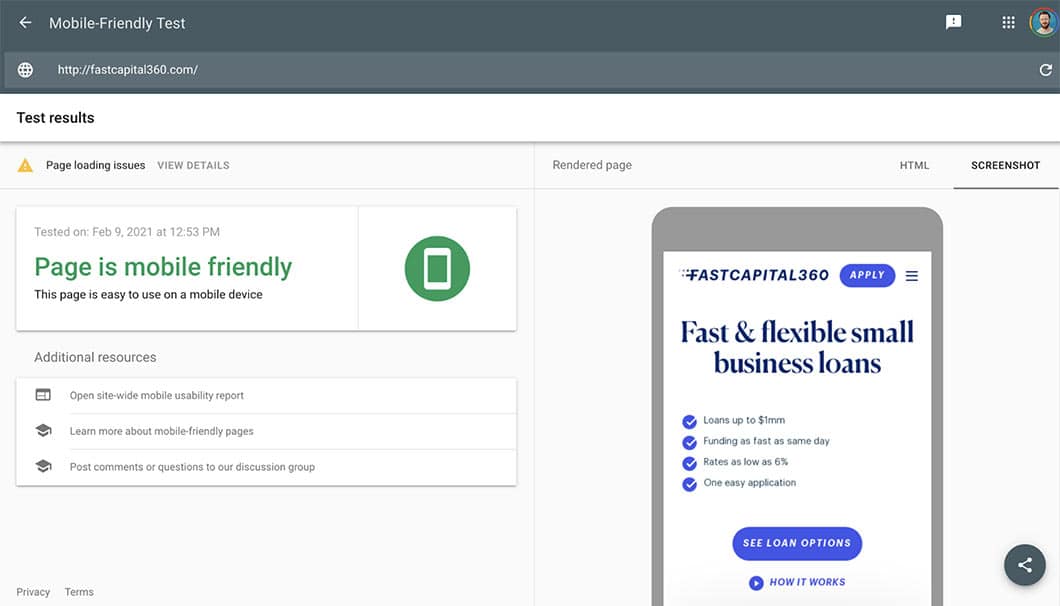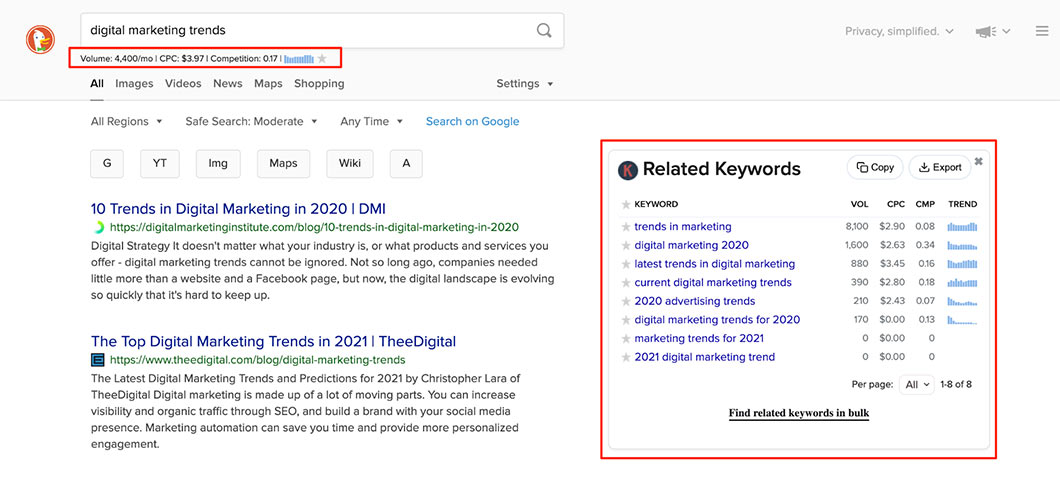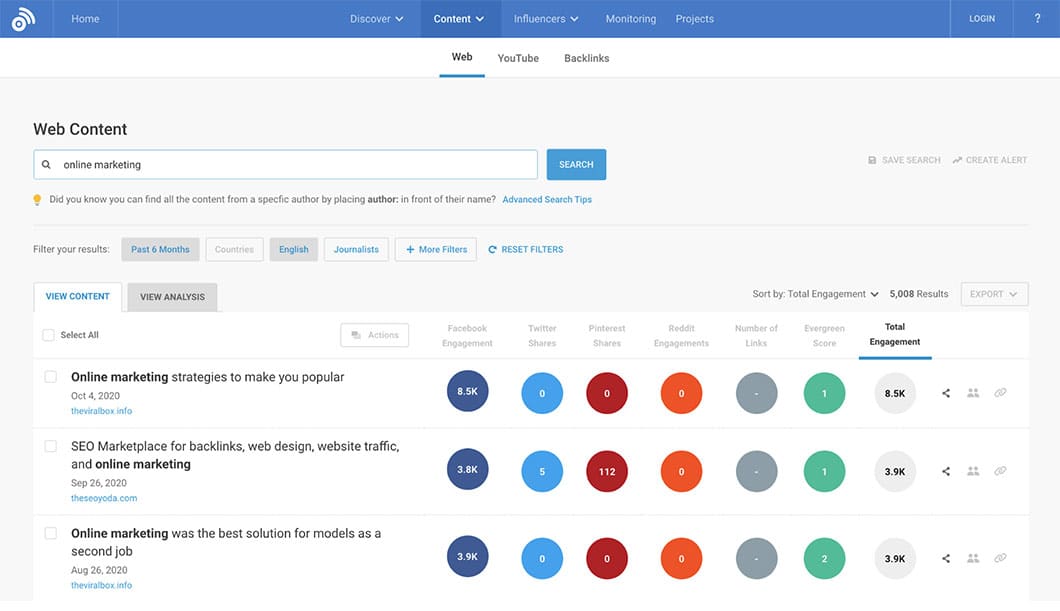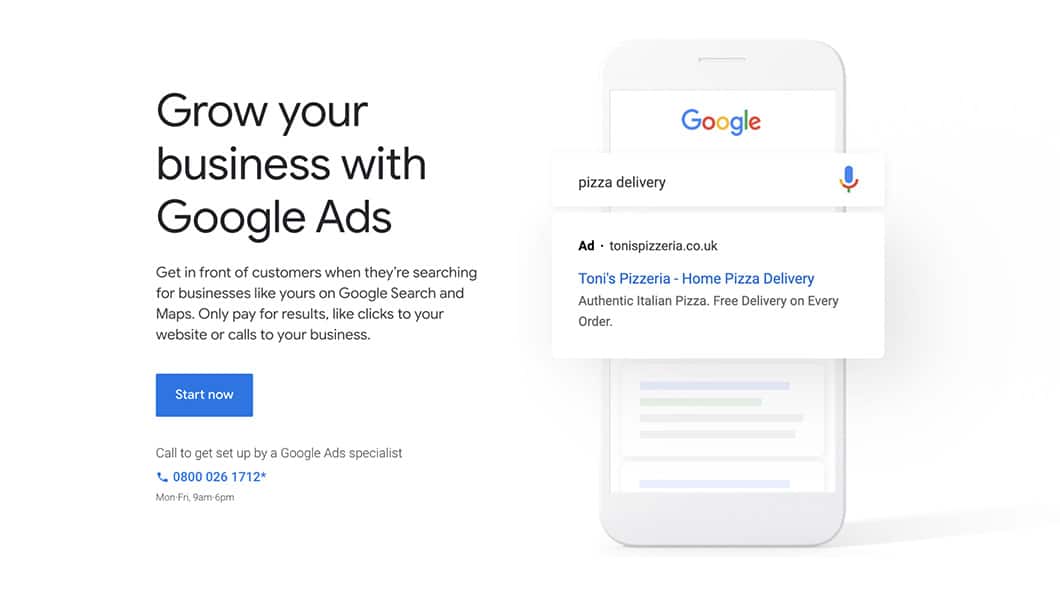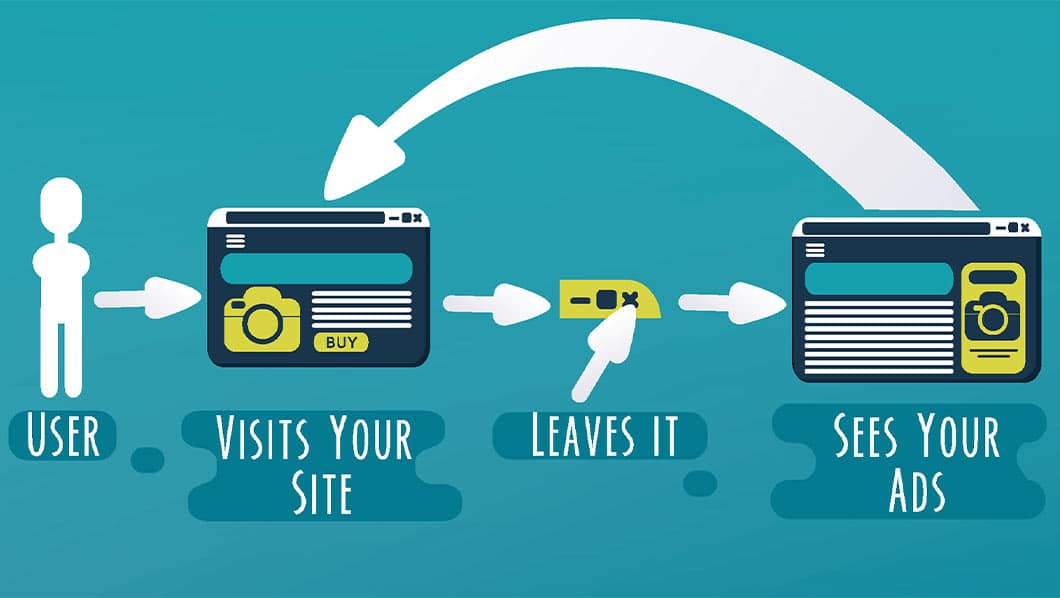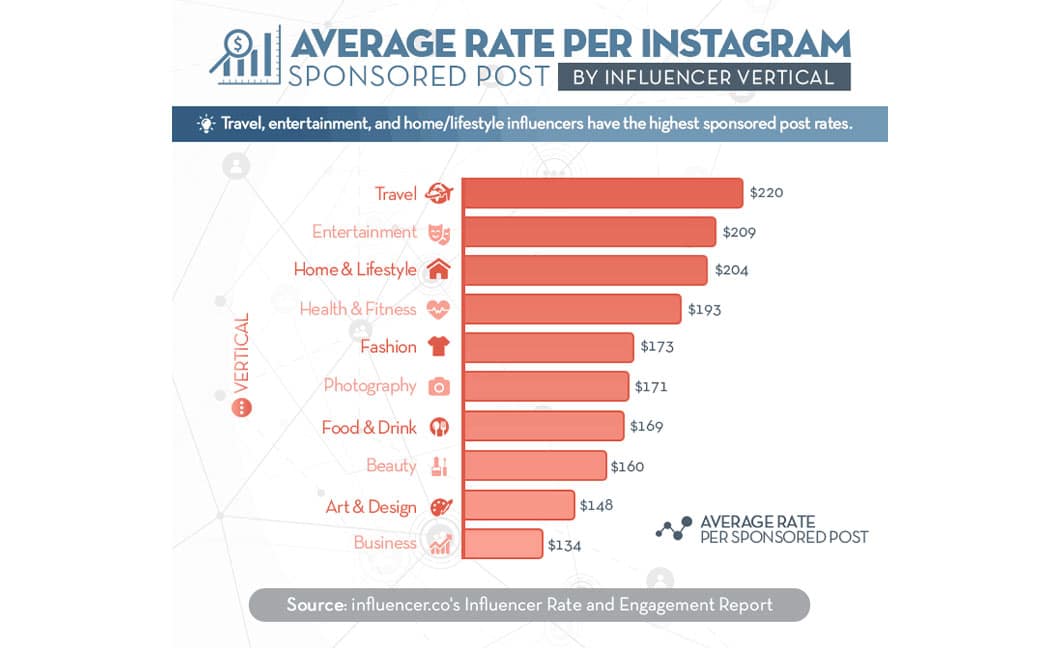If you don’t have an effective website marketing strategy for your business, you’re in big trouble.
Why? Your website is the epicenter of your business’s online marketing and sales efforts. In other words: No web traffic, no online sales.
Still, marketing a website is rarely straightforward.
There’s so much to consider — content, search engine optimization (SEO), ads and more. Plus, many successful website marketing strategies have a steep learning curve. Heck, using Google Analytics for the first time can feel like stepping into the cockpit of a rocket.
However, a solid website marketing strategy is essential if you want your business to succeed online. So, what can you do?
Learn how to market a website the smart way. First, we’ll lay the foundations for success. We’ll then explore how to rank your website on search engines and how to drive more traffic in a few key ways.
But first, let’s quickly review the goal:
What Is Website Marketing?
Website marketing is the process of driving qualified traffic to a website to increase sales. Most website marketing strategies focus on ranking higher in the search engine results pages (SERPs) and driving traffic directly with marketing methods, such as pay-per-click (PPC) advertising.

Step 1. Lay the Foundations for a Successful Website Marketing Strategy
First things first, before you start marketing a website, get your ducks in a row. How?
- Define your target market
- Conduct a website audit
- Determine your key performance indicators (KPIs)
- Optimize your website for mobile
Let’s take a closer look at each step.
A. Understand Your Target Market
Let’s cut to the chase: There’s no point in getting thousands of people to visit your website if none of them are interested in what you have to offer.
As marketing expert Philip Kotler once said, “There is only one winning strategy. It is to carefully define the target market and direct a superior offering to that target market.”
So, revisit your customer profiles and work on having a thorough understanding of your target market’s demographics, pain points and needs.
B. Conduct a Website Audit
Next, you need to know what you’re working with. For example, which web pages rank high in the SERPs, and which pages generate the most traffic?
When you understand what’s working and what isn’t, you can focus your resources on tasks that will move the needle. This is why the management consultant Peter Drucker said, “What gets measured gets improved.”
You can start by conducting a user-experience (UX) audit and a content audit to take stock.
This step alone will put you ahead of half of business-to-business (B2B) companies because 49% of B2B marketers measure their marketing performance.
C. Define Your KPIs
Once you have a lay of the land, define your KPIs.
“There are tons of metrics out there. Clicks. Percentage of new sales. Subscription revenue. But not all of them are KPIs,” says Jonathan Taylor, director of marketing, revenue and operations at analytics tool Klipfolio. “KPIs are the most important metrics you have — the ones that really underscore what your key business goals are.”
Common website marketing KPIs include:
- Traffic
- Unique website visitors
- Bounce rates
- Pages viewed per session
- Top landing and exit pages
For example, the best way to market ecommerce websites may be to focus on KPIs like traffic and conversions on product pages.
D. Optimize Your Website for Mobile Devices
Mobile devices account for about half of web traffic worldwide.
“Mobile is becoming not only the new digital hub, but also the bridge to the physical world,” said Thomas Husson, vice president and principal analyst at Forrester Research. “That’s why mobile will affect more than just your digital operations — it will transform your entire business.”
No wonder Google’s algorithm prioritizes mobile-friendly websites in the search results.
It’s a smart idea to optimize your website and UX for mobile devices. You can start by using Google’s Mobile-Friendly Test service.
Step 2. Rank on Search Engines
Once you’ve laid the foundations for a successful website marketing strategy, it’s time to start marketing your business website.
When it comes to marketing websites, the holy grail is to secure the No.1 spot on Google for your target key terms.
For example, if you sell customer relationship management software (CRM), ranking No.1 for the term “CRM” will likely pour qualified traffic into your website like Niagara Falls.
So, how can you rank your website higher in the SERPs? With a solid SEO website marketing strategy.
Here’s what to do:
A. Define Your Target Search Terms
Start by identifying keywords that your target audience searches and the terms that competitors rank for.
To do this, you can use tools such as:
- Google Keyword Planner
- Ahrefs
- SEMRush
- Keywords Everywhere (featured in the image below)
B. Create Search Engine Optimized Content
Once you’ve prioritized which keywords to target first, identify content topics for each of them.
You can use tools like BuzzSumo, SERP Stats Questions and AnswerThePublic to help identify keyword search intents.
C. Generate Backlinks
Backlinks are links from one website to another. You can keep track of your backlinks with tools like:
Generating high-quality backlinks to your website will help it rise in the SERPs. There are three main ways to acquire backlinks:
- Produce highly shareable and link-worthy content, such as industry reports and expert roundups.
- Use direct outreach to get your products or services featured on high-profile websites.
- Guest post on other authority websites, like our CMO Roie Raitses does on Forbes.
Step 3. Drive Traffic
SEO is a crucial part of every effective website marketing strategy, but it can take time to experience substantial results. So, how can you drive traffic to your website fast?
Here are 3 effective ways to market a website and get results this week.
A. Run Ad Campaigns
Probably the easiest way to market a website is to use paid advertising platforms such as Facebook Ads and Google Ads.
However, this website marketing method requires a constant cash injection to produce traffic. Still, the investment can be well worth the returns — Google estimates that for every $1 a business spends on Google Ads, the business receives $8 in profit.
Plus, online advertising platforms provide highly effective targeting tools. For example, the image below reveals the tip of the iceberg when it comes to Instagram ad targeting.
You also can market a website with retargeting (or remarketing).
Have you ever been followed around the internet by advertisements for a particular product or service? This is retargeting in action.
Here’s how it works: Online advertising platforms such as Facebook Ads and Google Ads allow you to “tag” website visitors using a snippet of code embedded in your website.
B. Partner With Influencers
Another great way to market a website is to partner with influencers to promote your brand and offerings to their existing audience.
An “influencer” is simply anyone with influence over a relatively large number of people, such as celebrities or micro-influencers who have 10-100,000 social media followers.
In the example below, influencer Christine Higgs promotes the paint brand Benjamin Moore on her Instagram account to her 260,000 followers.
To give you an idea of costs, a sponsored Instagram post costs $180 on average, depending on the vertical.
However, you don’t need to work with Instagram influencers — depending on your target market, it may make more sense to work with bloggers or LinkedIn influencers.
C. Engage in Social Media Marketing
When you consider that 79% of people in the US had a social networking profile in 2019, it’s easy to understand why 91.9% of businesses are engaged in social media marketing in 2021.
In other words, social media should be part of your website marketing strategy. Especially as marketing your website for free is a simple task on social media — at least, it’s free in terms of money, but you will need some time and elbow grease.
The core aim of social media marketing is to build a community around your brand by sharing content and by interacting with your target market.
You can share images, videos and curated posts to help engage your target audience. And you can share blog posts and other content hosted on your website to direct users to the site.
Consider which platforms your target market spends the most time on and focus on them.
10 Ways to Market Your Website
Although we’ve focused on a few specific ways to market a website, plenty of other options are available. So, if you’re weighing your options, here’s a quick list of 10 ways to market your website to choose from:
- SEO: Rank your website higher in the SERPs.
- Content marketing: Create and promote content to attract your target market.
- Paid ads: Drive qualified traffic to your website witty paid ads
- Influencer marketing: Partner with influencers to promote your website to their audiences.
- Social media marketing: Engage your target market on social media and build a community around your brand.
- Referral marketing: Incentivize existing customers to promote your website to their network.
- Affiliate marketing: Incentivize third-party marketers to promote your website for a small sales commission.
- Retargeting: “Tag” website visitors and serve them ads after they’ve left your website.
- Email marketing: Capture visitors’ contact information and nurture them with email sequences.
- Web push notifications: Prompt visitors to sign up for web push notifications and nurture them with messages.
Start Driving More Traffic to Your Website
Learning how to market websites doesn’t have to be confusing. If you take it step-by-step, you can start marketing your website business effectively in no time.
Remember, before you start marketing websites, it’s important to lay the foundation for success. So, take the time to review your target market, perform a website audit, define your KPIs and optimize your website for mobile devices.
Then, once you’re ready, start marketing.
If you want to rank higher in the SERPs, identify target keywords and create search engine optimized content around them that your target market will find valuable. And make sure to generate high-quality backlinks with direct outreach and guest blogging.
Then, use website marketing strategies like paid ads, influencer marketing and social media marketing to drive traffic to your website.



